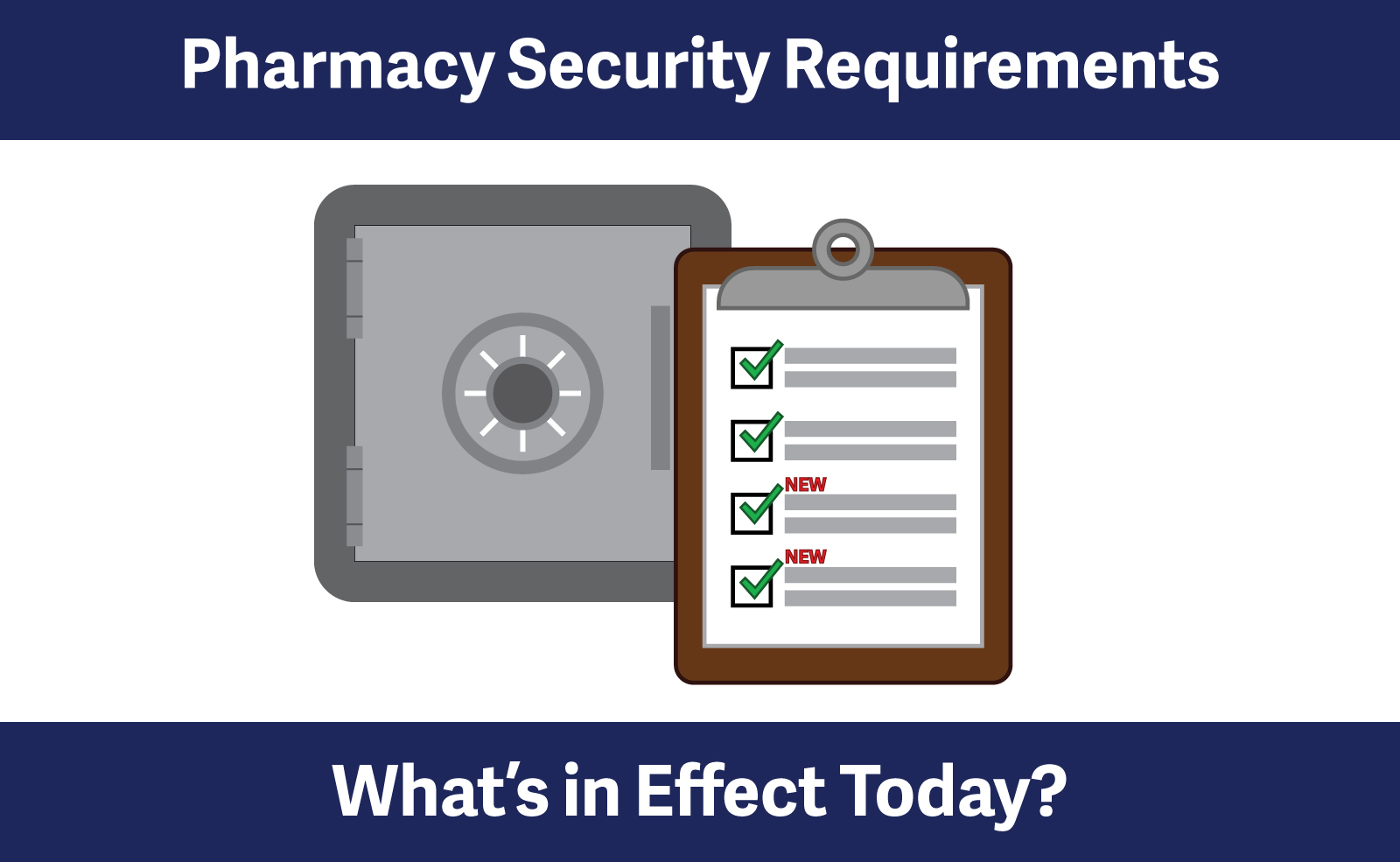Pharmacy Security Requirements: What’s in Effect Today?
On April 21, 2017, new minimum requirements to enhance the security of community pharmacies in BC were brought into effect. These measures are important to prevent pharmacy robberies and break and enters, and better protect personal health information.
Recently, the College received a number of inquiries from registrants who are either unaware of the new requirements, or unsure of when they need to comply. The requirements for time delay safes, security camera systems, monitored alarms, motion sensors and signage are all in effect now. The requirements for physical barriers are also in effect now for new and renovated community pharmacies. However, existing pharmacies have up to three years to implement physical barriers.
To ensure your pharmacy is meeting each of the security measures within the prescribed timelines, review the following Pharmacy Security Requirements Timeline for Compliance.
Pharmacy Security Requirements Timeline for Compliance
| Security Requirements | Description | Timeline for Compliance |
|---|---|---|
| Time-Delay Safe |
Keep Schedule IA drugs in a locked metal safe that is secured in place and equipped with a time delay lock set at a minimum of five minutes. (See Section 11.1 (1)(a) of the Pharmacy Operations and Drug Scheduling Act Bylaws) |
Mandatory as of April 21, 2017 for all new and existing community pharmacies |
| Security Camera System |
Install and maintain a security camera system that: :
* It is important to ensure that images captured by security camera systems are sufficient to enable law enforcement to identify the criminals. * Under the Personal Information Protection Act (PIPA), pharmacies are required to post visible and clear signage informing customers that the premise is being monitored by cameras. (See Section 11.1 (1)(b) of the Pharmacy Operations and Drug Scheduling Act Bylaws) |
Mandatory as of April 21, 2017 for all new and existing community pharmacies |
| Physical Barriers |
When a full pharmacist is not present and the pharmacy is accessible by non-registrants, Schedule I and II drugs, controlled drug substances and personal health information must be secured by physical barriers. Physical barriers provide an additional layer of security for the protection drugs and confidential health information. Physical barriers can be tailored to the needs and structure of the particular community pharmacy. Some examples of physical barriers include: locked gates, grillwork, locked cabinets, locked doors, and locked shelving units. (See Section 11.1 (2)(b) and (2.1) of the Pharmacy Operations and Drug Scheduling Act Bylaws) |
Mandatory as of April 21, 2017 for all new community pharmacies. Mandatory as of April 21, 2020 for all existing community pharmacies. Any pharmacy that undergoes renovations must include physical barriers in the renovations. |
| Monitored Alarm System |
When a full pharmacist is not present and the pharmacy is accessible by non-registrants, the dispensary must be secured by a monitored alarm. (See Section 11.1 (2)(a) and (2.1) of the Pharmacy Operations and Drug Scheduling Act Bylaws) |
Mandatory as of April 21, 2017 for all new and existing community pharmacies when a full pharmacist is not present and the pharmacy premise is accessible to non-registrants. Optional for new and existing community pharmacies where a full pharmacist is present at all times and the premise is accessible by non-registrants. |
| Motion Sensors |
Install and maintain motion sensors in the dispensary. Note: Security experts recommend that 360 degree motion detectors be installed on the ceiling as wall mounted motion detectors are vulnerable to blind spots. (See Section 11.1 (1)(c) of the Pharmacy Operations and Drug Scheduling Act Bylaws) |
Mandatory as of April 21, 2017 for all new and existing community pharmacies. |
| Signage |
A community pharmacy must clearly display at all external entrances and at the dispensary, signage provided by the College that identifies the premises as a pharmacy. The College will send signage to all new pharmacies at the time of licensure approval. * Signage provides a consistent province-wide deterrent message that additional layers of security are in place. It is critical that all pharmacies comply with this requirement to ensure that their pharmacy does not become a “soft target.” (See Section 11.1(3) and 11.1(5) of the Pharmacy Operations and Drug Scheduling Act Bylaws) |
Mandatory as of April 21, 2017 for all new and existing community pharmacies. Note: A pharmacy that is never open to the public and has no external signage identifying it as a pharmacy is exempt from this requirement. |
Pharmacy Security Policies
Pharmacy security measures are only as effective as the pharmacy professionals maintaining them, and the systems and processes in place to support them. The information included in PPP-74: Community Pharmacy Security provides guidance and recommended practices to ensure the effectiveness of your pharmacy security system.
Links
- Pharmacy Security


 Share
Share



